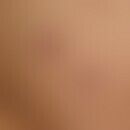Synonym(s)
HistoryThis section has been translated automatically.
DefinitionThis section has been translated automatically.
Autosomal recessive inherited "classic" pre-ageing syndrome, caused by mutations in the genes ERCC8 and ERCC6 (excision repair cross complementing, group 6/8 gene). The progressive repair deficiency syndrome manifests itself in early childhood and is characterized by short stature, visual and hearing disorders, neurological deficits and mental retardation.
You might also be interested in
Occurrence/EpidemiologyThis section has been translated automatically.
Prevalence 1:1.000.000 persons
EtiopathogenesisThis section has been translated automatically.
Autosomal recessive genetic disease; mutations in the excision repair cross complementing (ERCC)8 gene lead to CS-A; mutations in ERCC 6 lead to CS-B. The consequences are DNA repair defects (disturbance of DNA helicase) with primary manifestation in post-replicative, highly differentiated tissues (e.g. photoreceptors, oligodendroglia). The balance between protein build-up and protein breakdown is considerably disturbed.
ManifestationThis section has been translated automatically.
ClinicThis section has been translated automatically.
The clinic can be defined descriptively as "young old people".
Integument: Dry, wrinkled skin, hypersensitivity to UV rays, photodermatitis with blistering and scarring, but without malignant degeneration. Lipatrophy.
Extracutaneous manifestation: Dysplastic auricle, deep-seated eyes, prognathism, dysproportional dwarfism with microcephaly and relatively large extremities and progressive flexural contractures. Skeletal changes, deafness and retinitis pigmentosa also occur.
Furthermore, the "young old people" suffer early on from massive arteriosclerosis, which usually leads to their death.
DiagnosisThis section has been translated automatically.
Differential diagnosisThis section has been translated automatically.
TherapyThis section has been translated automatically.
LiteratureThis section has been translated automatically.
- Berneburg M, Krutmann J (2003) Xeroderma pigmentosum and related syndromes. dermatologist 54: 33-40
- Berneburg M et al (2000) UV damage causes uncontrolled DNA breakage in cells from patients with combined features of XP-D and Cockayne syndrome. EMBO J 19: 1157-1166
- Cockayne, EA (1936) Dwarfism with retinal atrophy and deafness. Arch Dis Child 11: 1-8
- Lehmann AR, Francis AJ, Giarelli F et al (1985) Prenatal diagnosis of Cockayne's syndrome. Lancet I: 486
- Dubaele S, Egly JM (2002) Cockayne syndrome, between transcription and DNA repair defects. J Eur Acad Dermatol Venereol 16: 220-226
- Gokdemir G et al (2002) Cockayne syndrome with generalized discoid lupus erythematosus-like lesions. J Eur Acad Dermatol Venereol 16: 290-292
- Mahmoud AA et al (2002) Cockayne syndrome in three sisters with varying clinical presentation. At J Med Genet 111: 81-85
- Menges-Wenzel EM et al (2001) Cockayne syndrome with marked cerebral symptoms. Clinic Padiatr 213: 134-138
- Rapin I et al (2000) Cockayne syndrome and xeroderma pigmentosum. Neurology 55: 1442-1449
Incoming links (7)
Berlin syndrome; ERCC2 Gene; Eye diseases, skin changes; Hartnup syndrome; Helicases; Nanisme progéroide; Progeria-like syndromes;Disclaimer
Please ask your physician for a reliable diagnosis. This website is only meant as a reference.




